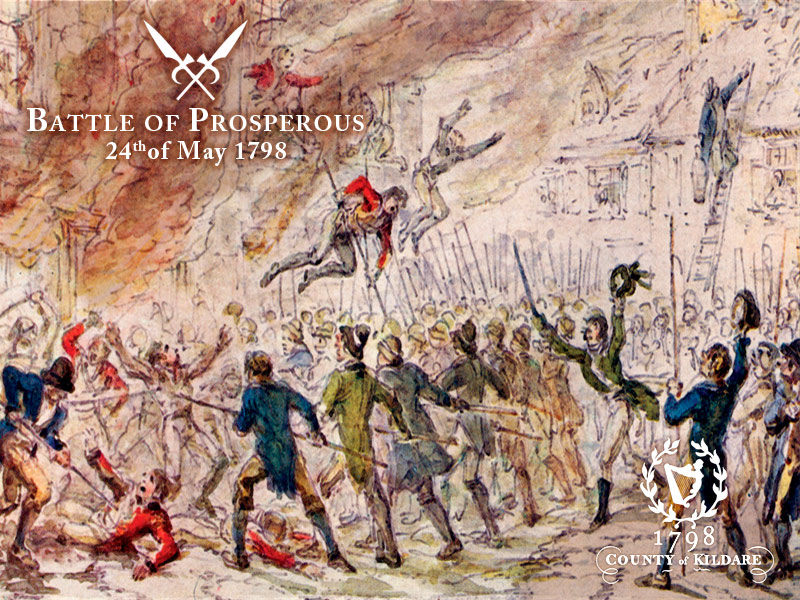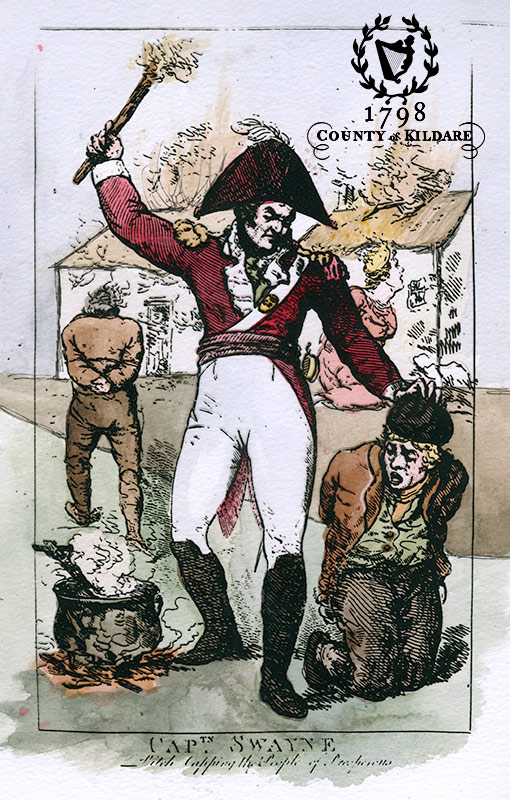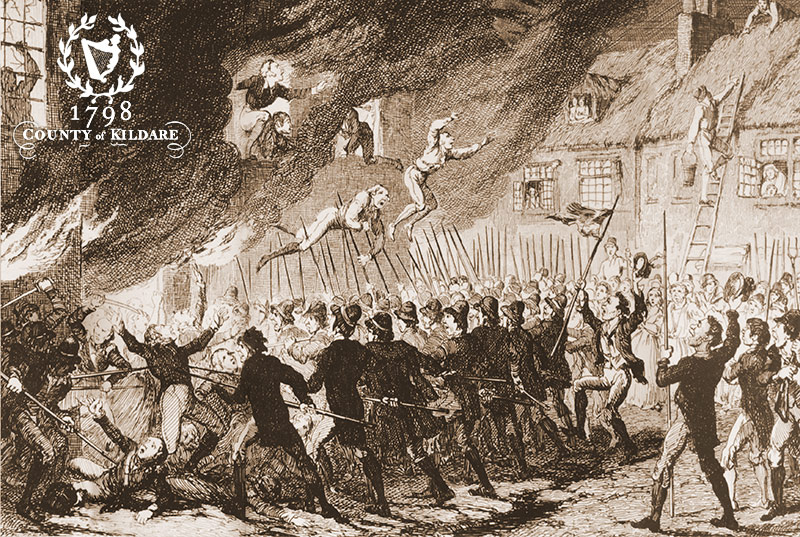Rebellion Towns & Villages

Prosperous
The garrison consisted of 35 of the city of Cork militia and 22 ancient Britons who were housed separately near the barracks. Captain Richard Longford Swayne, commander of the militia, had terrorised the area at free-quarters since his arrival on the 20th of May. Throughout the day, on Wednesday the 23rd, the rebels gathered in the woods. At 2 o’clock the following morning, around five hundred rebels under Dr. John Esmond and Andrew Farrell, stole into the town killing two sentries at their guard-posts. The troops billets were surrounded and attacked, some who were housed separately were killed in their beds.
At the barracks the rebels forced their way into Swayne’s quarters where he was piked and shot before the troops could secure the building. Lighted faggots and furze were thrown through the windows of the underground office and the barracks was engulfed. Many of those who tried to escape were piked to death in the streets.

Of the 57 soldiers in the garrison, nearly 40 were killed. Swayne’s body was burnt in a tar barrel. Later Downing’s house was burnt and a landlords agent, Stamers was killed. A manufacturer, Mr. Brewer was also murdered.
Prosperous became a rebel icon, the first rebel victory of 1798.
When Lieutenant Colonel Charles Stewart recaptured Prosperous on the 19th of June, he was delighted to report that he had “ransacked and burnt this receptacle of Rebellion” regretting only that his orders did not allow him to pursue the rebels who had fled.

Rebellion Towns & Villages
Naas | Ballymore | Old Kilcullen | Knockaulin | Narraghmore | Ballitore | Athy | Monasterevin | Kildare Town | Rathangan | Gibbet Rath | Clane | Prosperous | Timahoe | Ovidstown | Surrender
